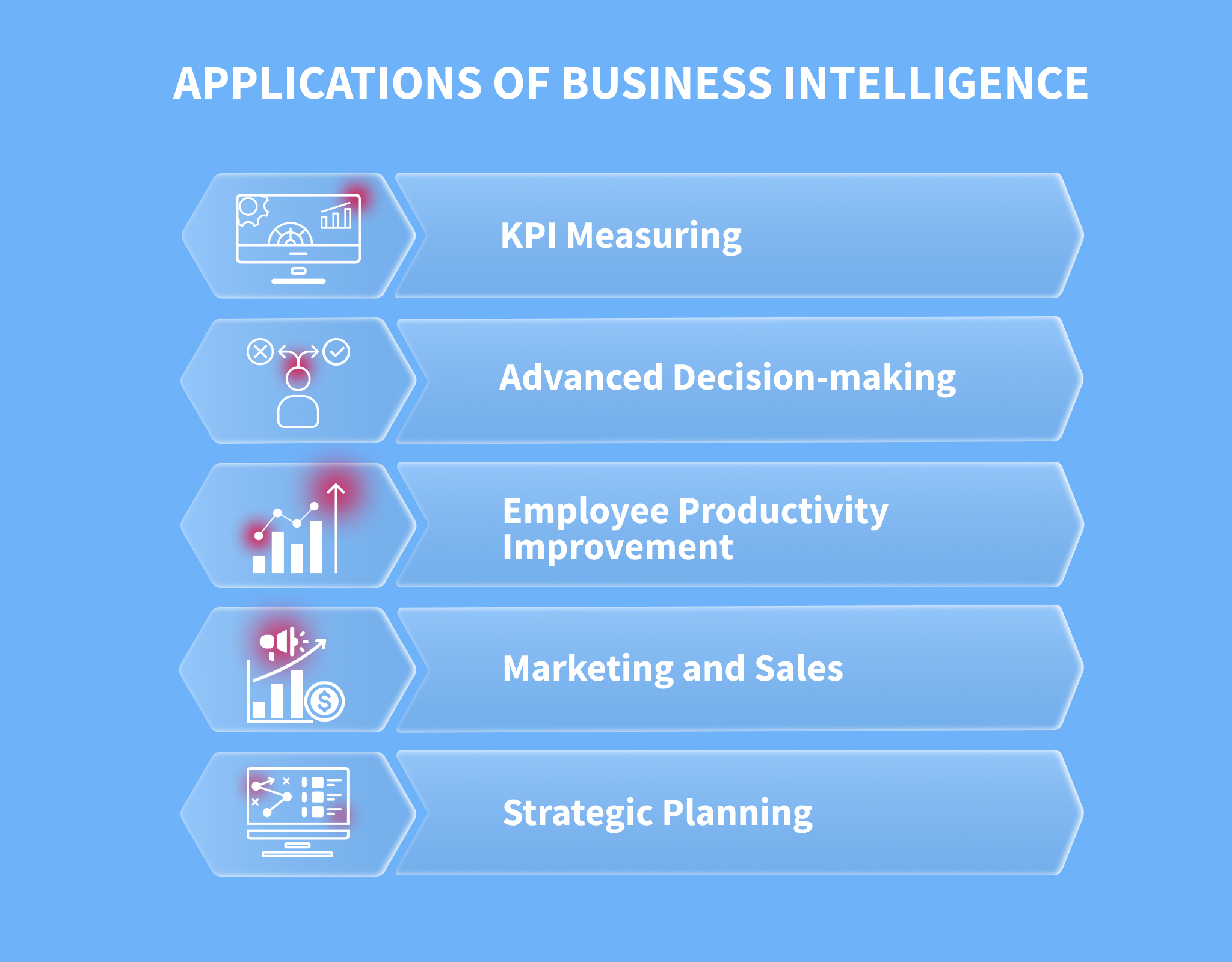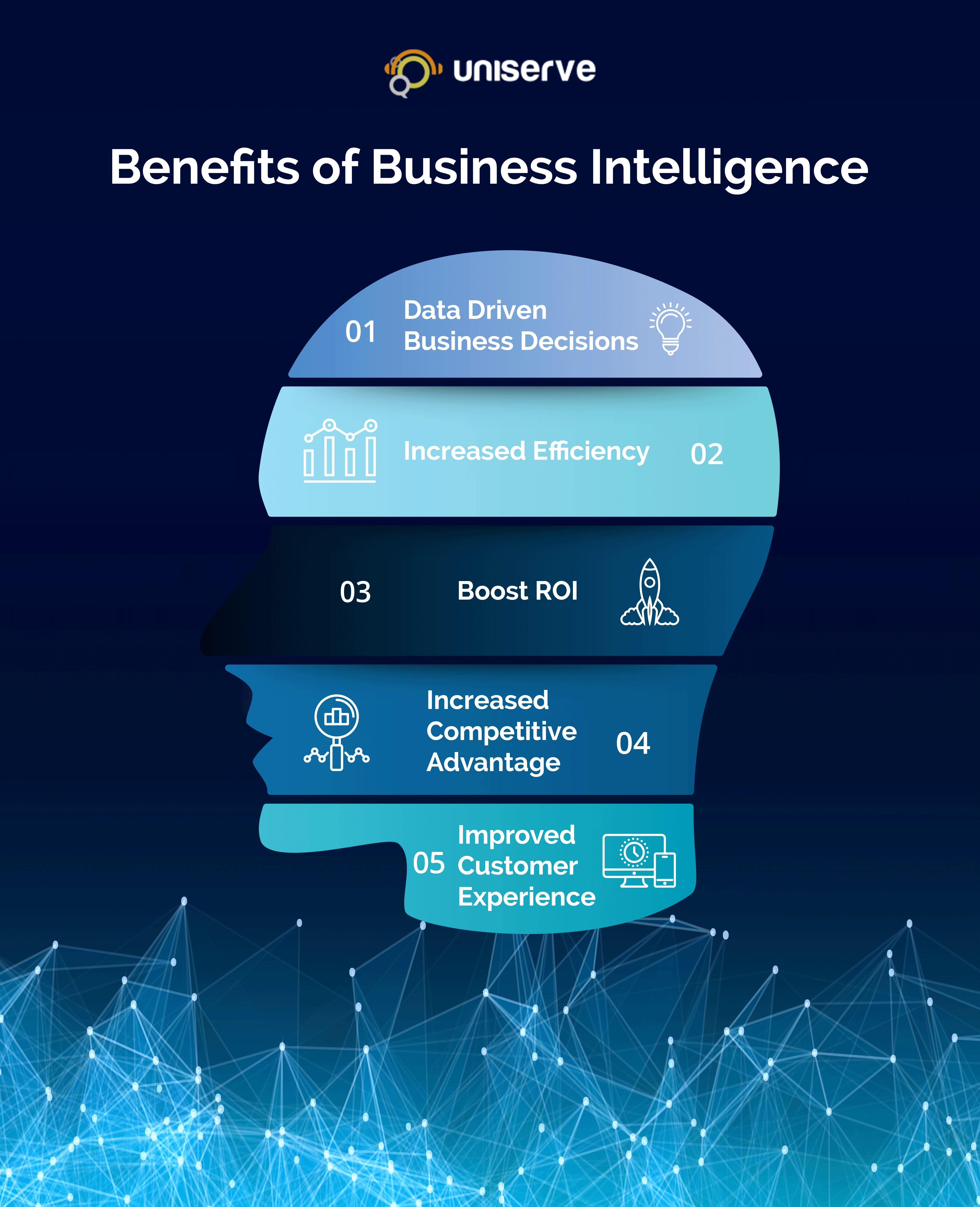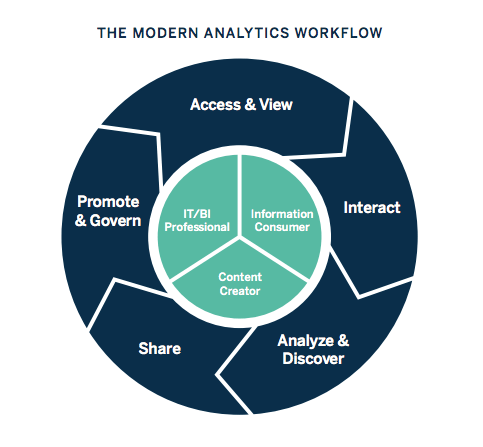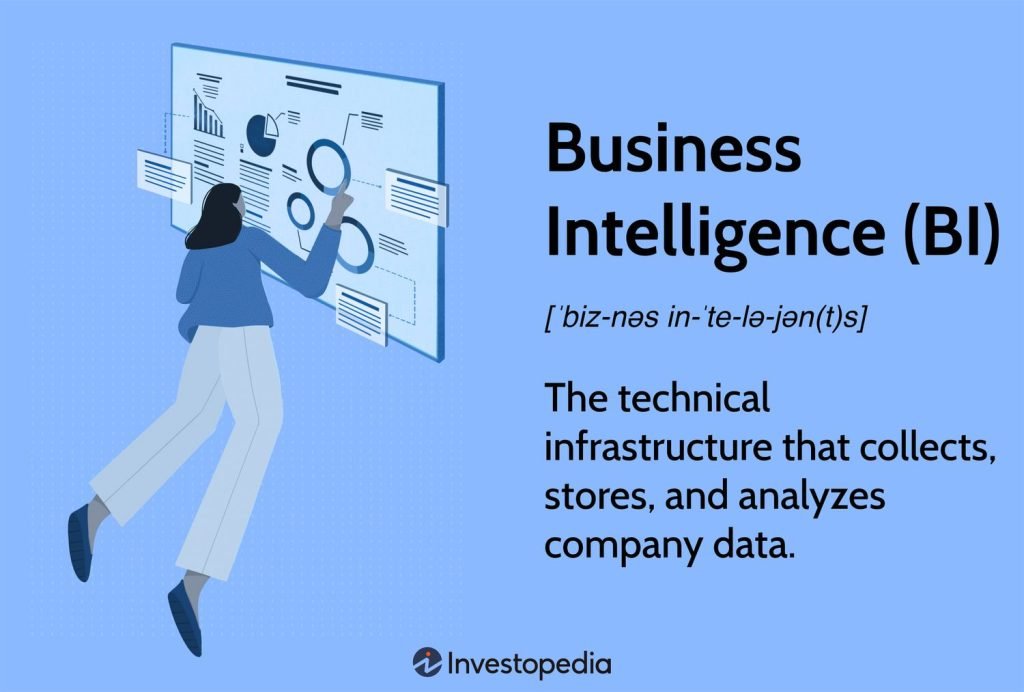Business Intelligence (BI) involves analyzing data to make informed business decisions. It helps organizations optimize performance and drive growth.
Business Intelligence systems gather, process, and analyze vast amounts of data. These systems provide actionable insights through interactive dashboards and reports. BI tools support data-driven decision-making, enhancing efficiency and competitiveness. Companies leverage BI to identify trends, forecast future events, and pinpoint areas for improvement.
Effective BI strategies can lead to increased profitability and improved operational processes. As technology advances, BI tools become more sophisticated and user-friendly. Small and large enterprises alike benefit from implementing robust BI solutions. Understanding BI is essential for staying competitive in today’s data-driven market.
Introduction To Business Intelligence
Business Intelligence (BI) plays a key role in modern business. It helps companies make data-driven decisions. BI tools gather, process, and analyze data. This aids in improving operations, understanding trends, and gaining a competitive edge.
Defining Business Intelligence
Business Intelligence refers to technologies and strategies for analyzing business data. BI tools turn raw data into useful insights. These insights help managers make informed decisions. BI covers data mining, analytics, and reporting.
Key components of BI include:
- Data Warehousing
- Data Mining
- Reporting
- Analytics
- Business Performance Management
Importance In Modern Business
Modern businesses generate massive amounts of data daily. Using BI tools, businesses can analyze this data effectively. This helps in understanding customer behavior, market trends, and internal operations.
Benefits of BI include:
| Benefit | Description |
|---|---|
| Improved Decision Making | Data-driven insights lead to better decisions. |
| Increased Efficiency | Optimizes business processes and operations. |
| Competitive Advantage | Gains edge over competitors with accurate data. |
Key Components
Business Intelligence (BI) helps businesses make informed decisions. Key components of BI include Data Warehousing and Data Mining. These elements work together to provide valuable insights.
Data Warehousing
Data Warehousing is essential for BI. It stores large amounts of data from various sources. This data is cleaned, organized, and ready for analysis.
- Central Repository: A single place for all data.
- Historical Data: Keeps track of past data for trends.
- Data Integration: Combines data from different sources.
A data warehouse improves data quality. It helps businesses make better decisions.
Data Mining
Data Mining finds patterns in large data sets. It helps uncover hidden trends. This process is key to predicting future outcomes.
- Pattern Recognition: Identifies trends in data.
- Predictive Analysis: Forecasts future events.
- Decision Support: Provides insights for better choices.
Data mining uses algorithms to analyze data. It turns raw data into useful information. This helps businesses stay competitive.
| Component | Function |
|---|---|
| Data Warehousing | Stores and organizes data |
| Data Mining | Analyzes data for patterns |
Understanding these components is crucial. They form the backbone of any successful BI strategy.
Technologies Involved
Business Intelligence (BI) uses various technologies to transform data into actionable insights. These technologies make it easier for businesses to make informed decisions.
Big Data Analytics
Big Data Analytics processes large volumes of data. It helps uncover hidden patterns, correlations, and other insights. This technology handles structured and unstructured data from diverse sources.
Key features of Big Data Analytics include:
- Volume: Handles vast amounts of data.
- Velocity: Processes data at high speeds.
- Variety: Manages diverse data types.
- Veracity: Ensures data accuracy and reliability.
Businesses gain a competitive edge by leveraging Big Data Analytics. It helps them make better decisions and improve efficiency.
Machine Learning
Machine Learning (ML) is a subset of artificial intelligence. It enables systems to learn from data and improve over time. In BI, ML automates data analysis and predicts future trends.
Benefits of using Machine Learning in BI include:
- Automation: Reduces manual data analysis tasks.
- Accuracy: Provides precise predictions and insights.
- Efficiency: Speeds up data processing.
- Scalability: Handles increasing data volumes effortlessly.
Machine Learning models can detect anomalies, forecast sales, and segment customers. These capabilities enhance decision-making and strategic planning.

Credit: nix-united.com
Data Collection Methods
Business Intelligence thrives on effective data collection methods. Collecting accurate data is essential. It helps businesses make informed decisions. This section dives into two main data sources: internal and external.
Internal Data Sources
Internal data sources are data collected from within the organization. This data is usually more reliable and relevant. Here are some common internal data sources:
- Sales Records: Track sales performance.
- Employee Data: Monitor workforce efficiency.
- Customer Feedback: Understand customer needs.
- Inventory Management: Control stock levels.
Internal data is vital. It provides insights into operational efficiency. It helps in identifying areas for improvement. It also ensures alignment with business goals.
External Data Sources
External data sources are data collected outside the organization. They offer broader perspectives. Here are some common external data sources:
- Market Research: Understand market trends.
- Social Media: Gauge public opinion.
- Government Reports: Access regulatory information.
- Competitor Analysis: Study competitor strategies.
External data helps in strategic planning. It ensures businesses stay competitive. It also aids in identifying new opportunities. Combining internal and external data provides a comprehensive view.
Transforming Data
Transforming data is a key part of Business Intelligence. It turns raw data into valuable insights. This process involves several steps. Each step is crucial for accurate and useful information.
Etl Processes
ETL stands for Extract, Transform, Load. These are the three steps used to transform data.
- Extract: This step pulls data from different sources.
- Transform: This step changes the data into a usable format.
- Load: This step puts the data into a database.
The ETL process makes sure that data is clean and ready for analysis. It saves time and reduces errors.
Data Cleaning
Data cleaning is an important part of transforming data. It removes errors and inconsistencies.
Common steps in data cleaning include:
- Removing duplicates: Ensures each record is unique.
- Fixing errors: Corrects typos and inaccuracies.
- Standardizing formats: Makes data consistent.
- Handling missing values: Fills in or removes gaps.
Clean data is crucial for accurate business insights. It ensures that the analysis is based on true data.
Analyzing Data
Analyzing data is crucial in Business Intelligence. It helps businesses make informed decisions. By examining trends and patterns, companies can optimize their strategies. This section explores different methods of analyzing data.
Statistical Analysis
Statistical analysis involves collecting and examining data. It helps to understand underlying trends and relationships. Using statistical methods, businesses can identify patterns. These patterns help in predicting future outcomes.
Key techniques include:
- Descriptive statistics
- Inferential statistics
- Hypothesis testing
A simple table can show how these techniques differ:
| Technique | Purpose | Example |
|---|---|---|
| Descriptive Statistics | Summarize data | Mean, Median, Mode |
| Inferential Statistics | Make predictions | Confidence Intervals |
| Hypothesis Testing | Test assumptions | t-tests, Chi-square |
Predictive Modeling
Predictive modeling uses historical data to forecast future events. It employs various algorithms to make predictions. This helps businesses prepare for potential scenarios. Key algorithms include:
- Linear Regression
- Decision Trees
- Neural Networks
Each algorithm has its strengths:
- Linear Regression: Best for simple relationships.
- Decision Trees: Good for categorical data.
- Neural Networks: Ideal for complex patterns.
Predictive models can improve decision-making. They help in risk management and resource planning.
Visualization Tools
Visualization tools transform raw data into visual formats. These tools help businesses understand trends, patterns, and insights. They make data easy to grasp and analyze. Among the most popular visualization tools are dashboards and reporting tools.
Dashboards
Dashboards offer a real-time view of key metrics. They display data visually using charts, graphs, and maps. This helps users quickly see performance trends and spot issues.
Dashboards are customizable. You can tailor them to show the data that matters most. For example, sales teams can track monthly revenue, while HR teams monitor employee performance.
Here are some key features of dashboards:
- Real-time updates
- Interactive elements
- Customizable views
- Data integration
Reporting Tools
Reporting tools generate detailed reports from data. These tools help businesses make informed decisions. Reports can be scheduled or generated on-demand.
Reports often include tables, charts, and summaries. They provide a deep dive into specific metrics. For example, financial reports can detail monthly expenses, while marketing reports show campaign performance.
Here are some key features of reporting tools:
- Automated report generation
- Customizable templates
- Data export options
- Advanced filtering
| Feature | Dashboards | Reporting Tools |
|---|---|---|
| Real-time updates | Yes | No |
| Interactive elements | Yes | No |
| Customizable | Yes | Yes |
| Detailed analysis | No | Yes |
Strategic Insights
Business Intelligence (BI) offers powerful tools for strategic insights. These insights drive growth and improve efficiency. Through BI, companies can uncover hidden patterns. These patterns help in making smarter decisions.
Identifying Trends
Identifying trends is crucial for any business. BI tools analyze vast amounts of data. They find patterns and predict future trends. This helps businesses stay ahead of the competition.
For instance, sales data can reveal seasonal trends. Companies can then adjust inventory and marketing efforts. This ensures better customer satisfaction and higher profits.
Here is an example of how trends can be identified:
| Month | Sales |
|---|---|
| January | $10,000 |
| February | $12,000 |
| March | $15,000 |
Making Data-driven Decisions
Data-driven decisions rely on solid data. BI tools provide this data. They help businesses make informed choices. These choices lead to better outcomes.
Consider a company deciding on a new product launch. BI tools can analyze market data. This helps understand the potential success of the product.
Here are some benefits of data-driven decisions:
- Reduced risk
- Increased efficiency
- Better resource allocation
In summary, strategic insights from BI are invaluable. They help in identifying trends and making data-driven decisions. Businesses can thrive with these insights.
Challenges And Solutions
Business Intelligence (BI) is essential for modern businesses. It helps make data-driven decisions. However, BI faces several challenges. This blog post will explore key challenges and solutions.
Data Quality Issues
One major challenge in BI is data quality. Poor data can lead to wrong decisions. Inconsistent data formats and missing data are common issues.
To address this, implement data cleansing techniques. Use automated tools to identify and fix errors. Regularly update and maintain the data.
Establish data governance policies. Create standards for data entry and storage. Train staff to follow these standards.
| Issue | Solution |
|---|---|
| Inconsistent Data Formats | Use standardized formats |
| Missing Data | Implement data validation |
| Duplicate Entries | Regular data audits |
Ensuring Data Security
Another critical challenge is data security. Sensitive data must be protected. Unauthorized access can lead to data breaches.
Implement encryption for data storage and transmission. Use strong passwords and multi-factor authentication. Regularly update security protocols.
Conduct security audits to identify vulnerabilities. Train employees on data security practices. Make sure they understand the importance of protecting data.
- Use encryption
- Strong passwords
- Multi-factor authentication
- Regular security audits
Ensuring data security is a continuous process. Keep up with the latest security trends. Adapt your strategies accordingly.

Credit: uniserveit.com
Future Of Business Intelligence
The future of Business Intelligence is bright and full of possibilities. Companies are looking for ways to make better decisions. They need data to be fast and accurate. New technologies will change how we use Business Intelligence.
Ai Integration
Artificial Intelligence (AI) is changing Business Intelligence. AI can quickly analyze large amounts of data. It can find patterns that humans might miss. This helps businesses make better decisions. AI can also predict future trends. This helps companies plan better.
With AI, businesses can:
- Automate data analysis
- Get insights faster
- Improve accuracy of predictions
This makes AI a key part of the future of Business Intelligence.
Real-time Analytics
Real-Time Analytics is another important part of the future. Businesses need information fast. Real-time analytics provides data as it happens. This helps companies react quickly to changes. They can make decisions based on current information.
Real-time analytics has many benefits:
- Improves decision-making speed
- Helps in quick response to market changes
- Enhances customer experience with timely information
For example, a retail store can use real-time data to manage stock better. They can see what items are selling fast and order more. This helps them avoid running out of popular items.
The future of Business Intelligence will be exciting. With AI and real-time analytics, companies will have powerful tools. These tools will help them stay ahead in a competitive market.

Credit: www.tableau.com
Frequently Asked Questions
What Is Business Intelligence?
Business Intelligence (BI) refers to technologies and strategies used by enterprises for data analysis. BI helps in making informed business decisions.
Why Is Business Intelligence Important?
Business Intelligence is crucial for data-driven decisions. It helps improve efficiency, identify market trends, and boost overall business performance.
How Does Business Intelligence Work?
Business Intelligence works by collecting, integrating, and analyzing data. It transforms data into actionable insights through reporting tools and dashboards.
What Are The Key Components Of Bi?
The key components of BI include data warehousing, data mining, reporting, and online analytical processing (OLAP). These components work together for data analysis.
Conclusion
Business intelligence transforms raw data into valuable insights. It helps companies make informed decisions quickly. Embracing BI tools can lead to better performance and competitive advantage. Stay ahead by integrating business intelligence into your strategy. The future of business is data-driven, so start leveraging BI today for success.




